For the second time in 2018, local teens from Tucson spent a week on their backyard National Forest.
This program was developed as a collaboration between the National Forest Foundation, Arizona-Sonora Desert Museum, the U.S. Forest Service, Arizona Conservation Corps (AZCC), Youth Career Connect and Pima County One Stop.
ECI aimed to give high school students an opportunity to participate in environmental conservation, develop leadership skills and learn about career opportunities in environmental science.
Program staff selected students from Tucson’s Sunnyside High School and Pueblo High School as Interns. They were then paired with a mentor from the AZCC. At the end of the week each group was asked to write a short description of the events of one day of the week, including highlights that stood out to them, things they learned, or projects they felt proud of.
The following is a short description of each day’s events as written by the students.
CLICK HERE TO LEARN MORE ABOUT THE EARTH CONSERVATION INTERNSHIP.
Friday October 5, 2018 - Laboratory of Tree-Ring Research, University of Arizona
On our first day of the Internship we journeyed to a lab at the University of Arizona. This special lab is called the Tree Ring Lab or Dendrochronology Lab. Fun fact, this lab is the largest of its kind in the world!
Dendrochronology is the study of Tree Rings. Many would wonder how this type of study could be rendered useful, but it can be used in more than one field of study. For example, scientists love to date various ancient objects. Dendrochronology is used to date said objects by counting the number of rings a piece of wood contains.
Not only will the rings give us the approximate age but it can also tell us what the environment was like in the past. An obvious question would be, “How can pieces of wood give information about the past environment?” The answer to that may be simpler than you think. Not all rings in the tree are the same. Some could be darker or lighter, thick or thin. Others could be scarred or even have large gaps or cuts in between them. If the distance between a dark ring to a light ring is big, it could mean that it rained a lot in that year. Short distances could signify droughts. The scars on the tree could range from termites to fires.
All of these are examples as to how a tree and its rings could teach us about the past. Going to the University of Arizona’s Dendrochronology Lab taught me a great deal and overall was a great experience.
Photo by Amy Orchard, ASDM
Photo by Amy Orchard, ASDM
Photo by Amy Orchard, ASDM
Tuesday October 9, 2018 - Arizona Sonora Desert Museum
The interns, AZCC, and staff from the Arizona- Sonora Desert Museum all got an opportunity to meet and talk to the interns about what they do. The interns learned from the AZCC about working with tools and how to properly handle them when not in use. The interns also met some wildlife!!
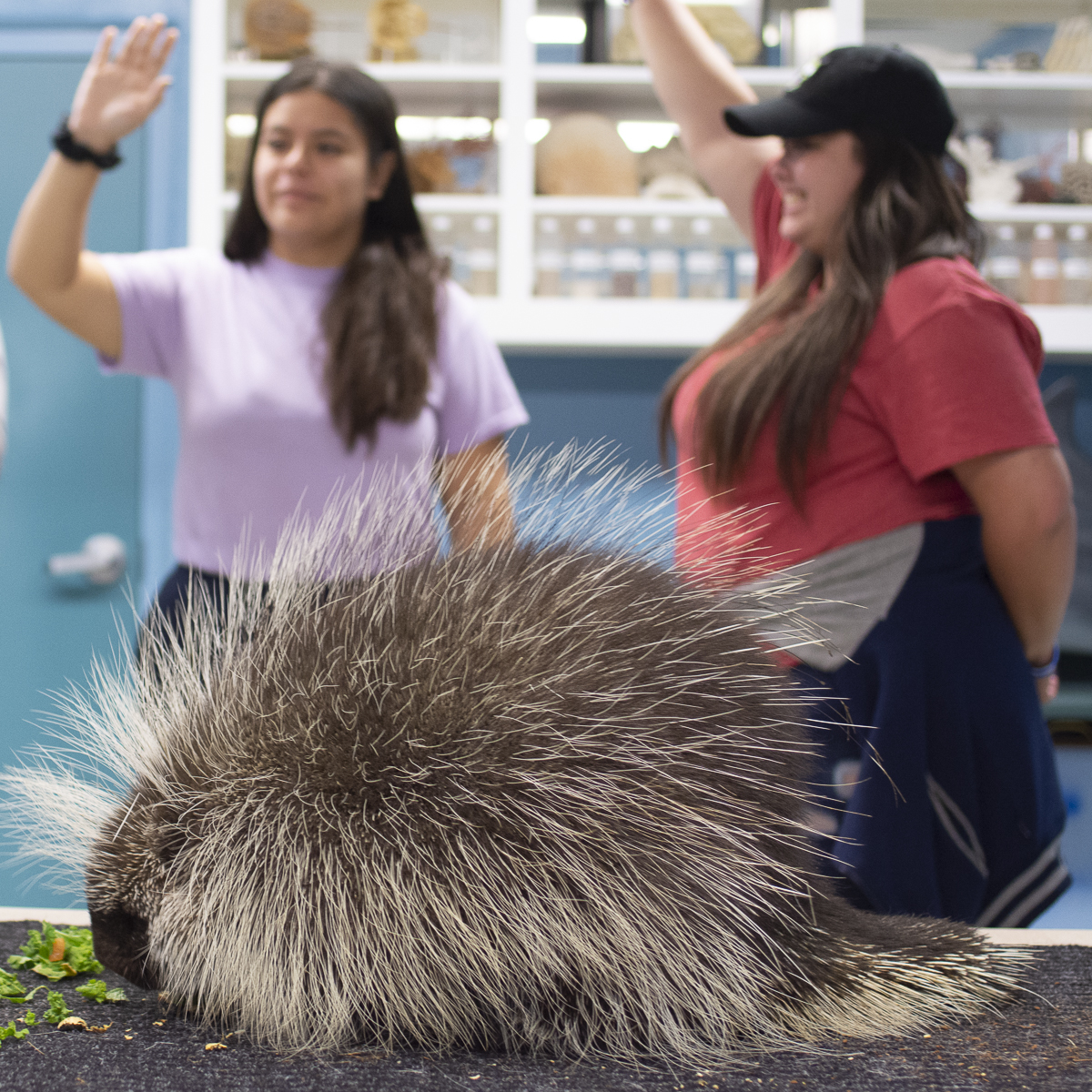
Photo by Michelle Dillon Photography
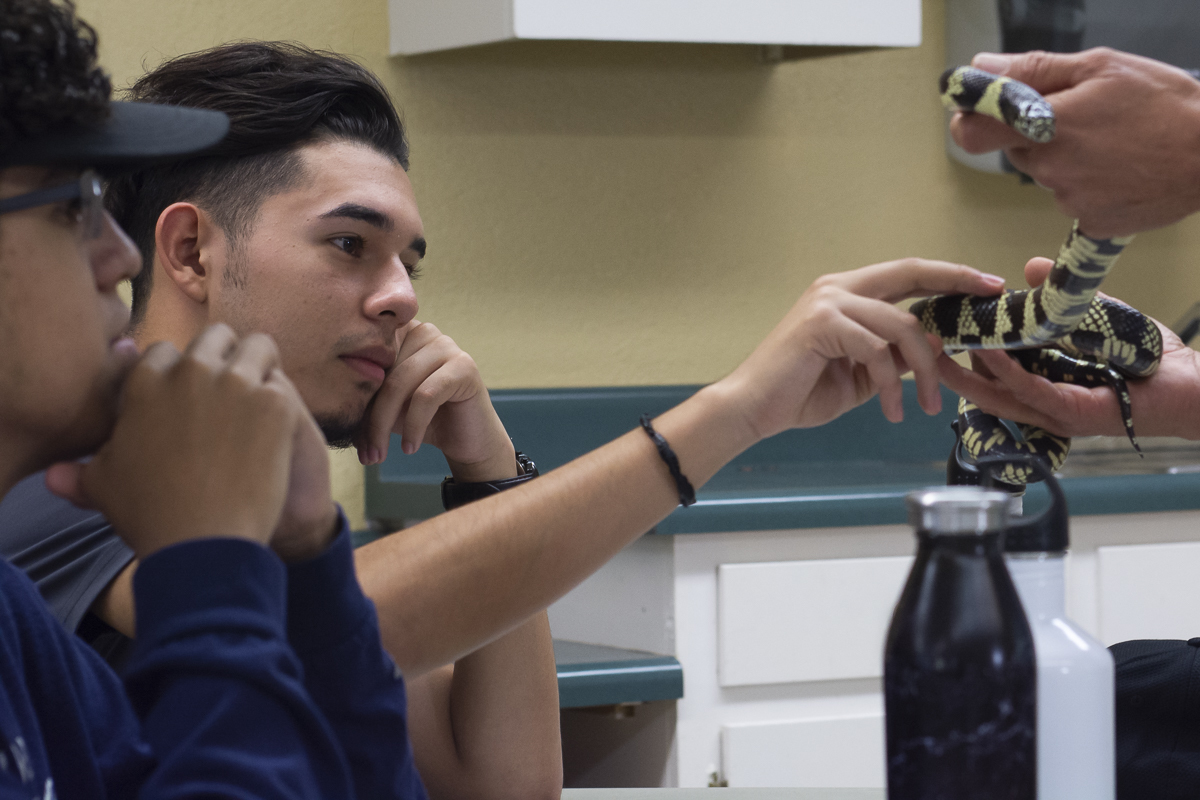
Photo by Michelle Dillon Photography
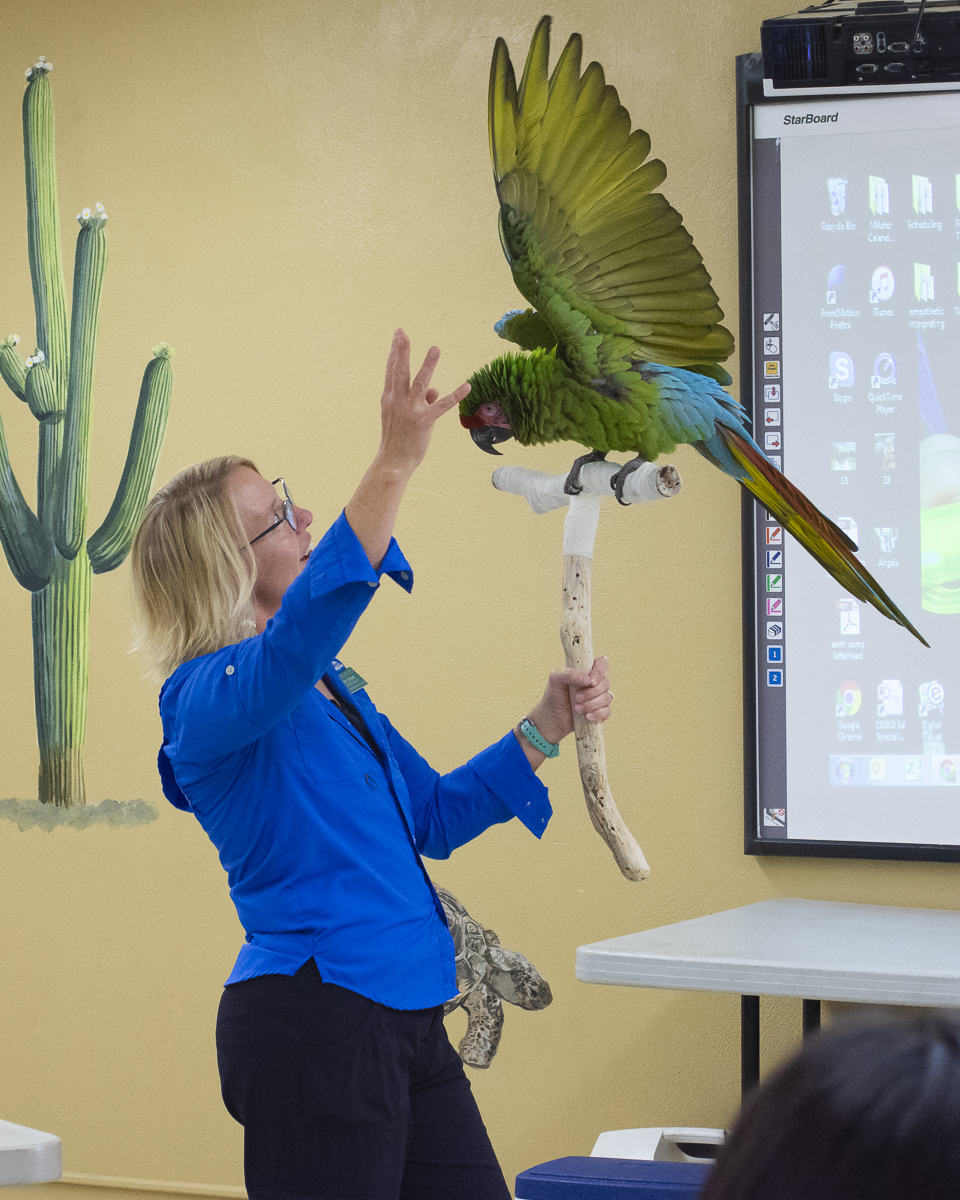
Photo by Michelle Dillon Photography
Later that day the interns teamed up with their AZCC mentors and explored around the desert museum and made Facebook posts about what they found while exploring the museum that was interesting to them.
After having some lunch, the interns learned about some job fields that are within wildlife and how the AZCC wound up with such an amazing opportunity!! After getting to know each other more, the interns and AZCC went back in to the museum, this time with a new task. Their task was to look for an example of conservation. After the task was complete the interns and AZCC got to play in the Packrat Playhouse. After presenting their conservation hunt task and wrapping everything up the interns said their goodbyes and parted their ways before meeting up for camping the next day.
Wednesday October 10, 2018 - Mt. Lemmon Biome Exploration and Campground Restoration
We traveled up Mt. Lemmon visiting different biomes. We began in the desert biome at Babad Do’ag rest stop. It consisted of mostly cacti and mesquite. Here we learn that the Tohono O’odham named the mountain Badad Do’ag which means Frog Mountain.
Next up was the Oak Woodlands at the Gordan Hirabayashi Recreational Site. We learned that this area used to be a prison camp during WWII, and an interesting fact is that the prisoners in the camp built most of the highway going up the front side of the mountain.
The next biome we visited was the chaparral biome at Windy Point Vista which had a beautiful view. Here we learned of the three minerals that make up the rock granite: fledspar, quartz and mica.
Next up was the Pine Forest at the top of the ski lift. Here we had lunch and learned about the differences in evergreen trees. Firs have flat and friendly needles and pines are pokey and come in pairs.
After this we traveled back down to the Oak Grasslands where we stopped at our campground, Molino Basin. We took a little break to learn about invasive species which was educational. We learned about buffelgrass and how much it grows. We got to see different types of grasses and why they grew where they do. We learned that when a fire happens buffelgrass grows all over the place and it becomes a sort of field.
For our lesson, we hiked to stream. It was short yet it was a lot of fun to hike through the rocks and sand. The stream was so clear and had tadpoles which was also a fun experience to see while we were studying the plants.
Then we began our first project with the Arizona Conservation Corps. We learned how to prune trees and the different species to remove and the ones to keep. We cleaned up the campground getting it ready to be opened to visitors the following weekend. After that we set up camp, ate dinner and called it a night.
Photo by Amy Orchard, ASDM
Photo by Amy Orchard, ASDM
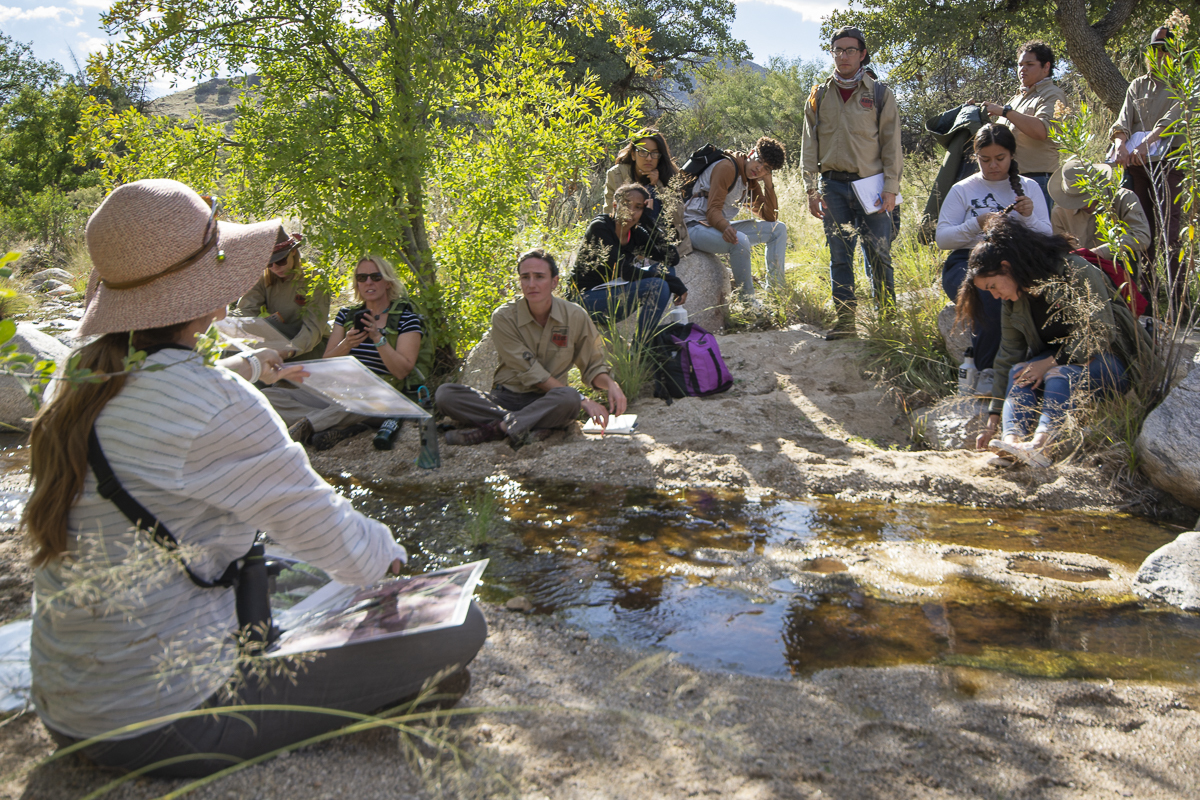
Photo by Michelle Dillon Photography
Thursday October 11, 2018 - Mt. Lemmon and Spring Box Restoration
On the following day we went on a long hike with tools in our hands and cement in our bags. We started at the General Hitchcock campground and went to Bear Saddle then forward to Maverick Spring. That was 2.5 miles going up 1000 ft in elevation. We took many breaks for food, water, and small lectures about the vegetation on the mountain.
Though we were all tired from the hike up, we continued working on the projects. One of the projects we focused on was the Spring Box Project. The purpose of this project was to repair and relocate a 120 pound concrete spring box in Maverick Spring. After a rainstorm, a tree nearby fell over and its roots with it. This caused the spring to shift alongside it and leave the spring box useless.
This spring box serves as a filter at the top of a hill that connects to a catcher at the bottom of it through a plastic pipe. The catcher is split into two sections; one for humans and one for animals. With the help of the spring box, the spring water is able to be filtered for the benefit of the critters in the mountains and us people that hike up there.
While half of the team was focused on the Spring Box, the rest helped clear and clean trails for the ease of hikers. After that we hiked the 2.5 miles back down. That’s about 5 miles in one day on the difficult terrain. At the end of the day we accomplished a lot together and are proud of all we did.
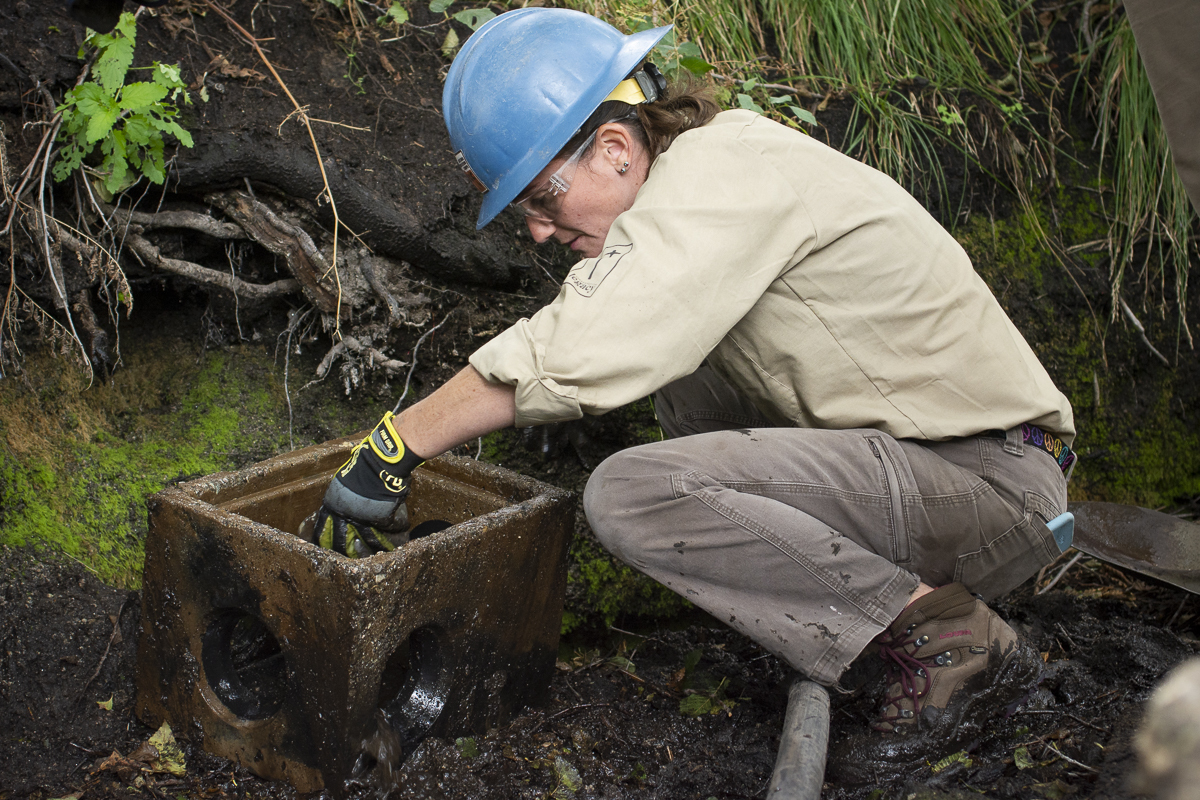
Photo by Michelle Dillon Photography
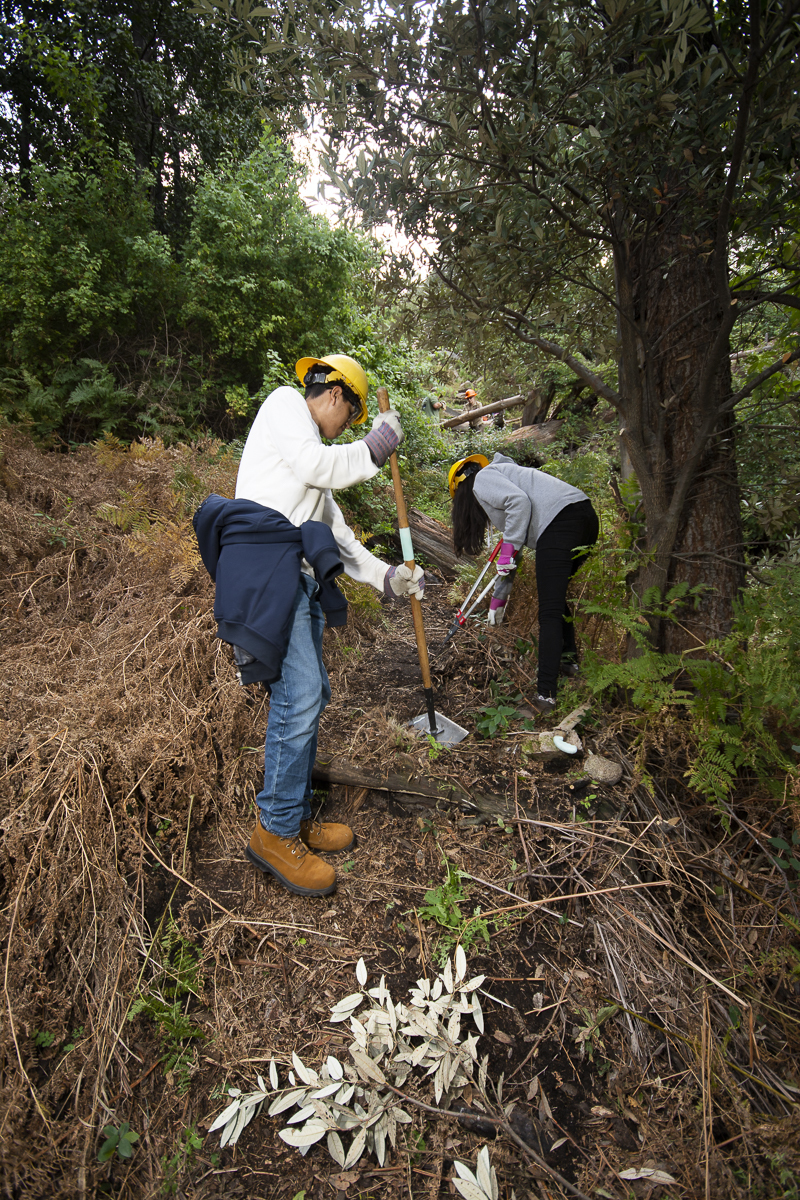
Photo by Michelle Dillon Photography
Photo by Amy Orchard, ASDM
Friday October 12, 2018 - Mt. Lemmon and Palisades Visitor Center
Rain, rain and more rain. Our planned projects got washed out but we had an interesting time listening to scientists and staff members of the Forest Service while sitting in the Visitors Center at Palisades.
An Archeologist taught us a lot about finding old things and how it can teach us about the past, present and future. We cored a tree with a Forester. We learned about cows and rangeland and how it needs conserved.
We heard from a Forest Engineer who was once a Pueblo High School student like ourselves who didn’t believe in himself too much until he found the Forest Service Pathways program and learned about cool jobs he could get.
The rain stopped for a while so we did get to do a work project moving tons of broken cement into a trailer. It was hard work but we felt good when we saw how much we had moved. It was a lot!
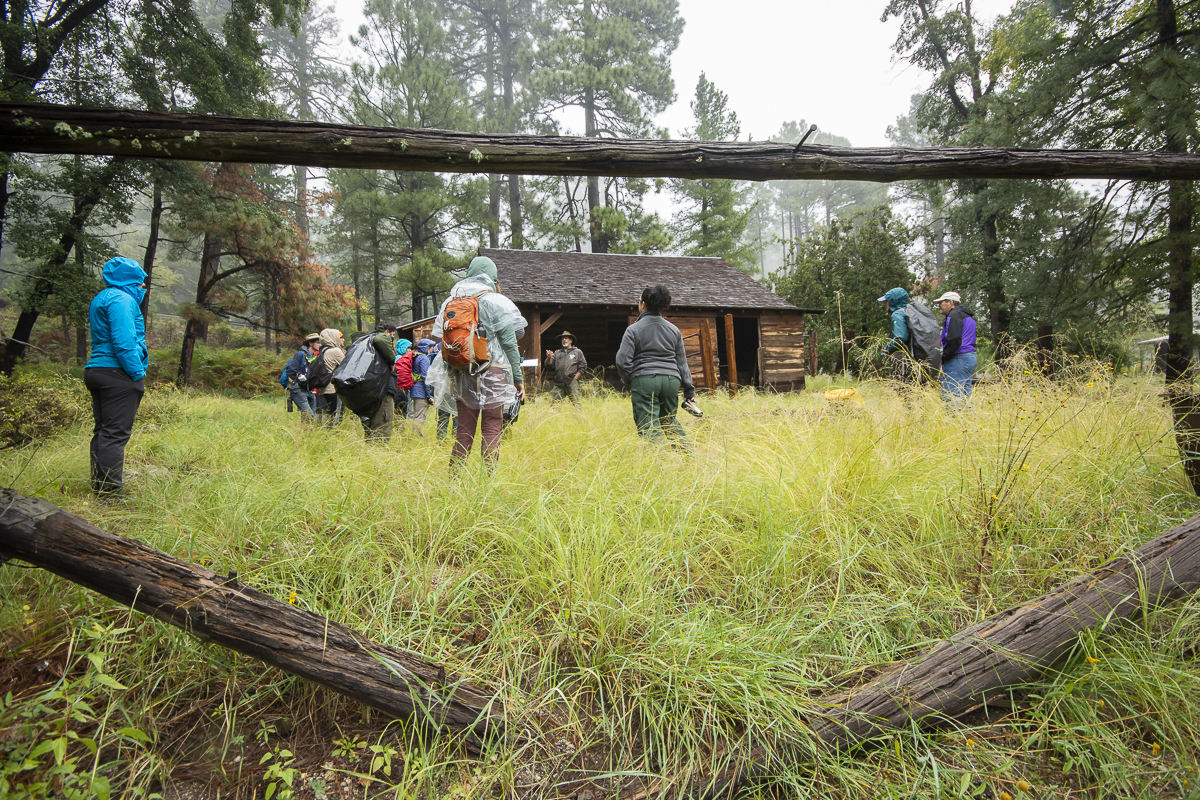
Photo by Michelle Dillon Photography
Photo by Amy Orchard, ASDM
Saturday October 13, 2018 - Mt. Lemmon and Rose Canyon Lake
The Fall Earth Conservation Internship had come to its end. The day began as students and families were driven up Mount Lemmon. We drove up to the Visitor’s Center where we met up with the Arizona Conservation Corps members.
Interns shared our new knowledge with our families. We talked about tree ring research, wildfires and the life zones present on Mt. Lemmon. We then walked over to the apple tree to try some fresh apples. Wearing our rain ponchos and trash bag substitutes, for many this was the first time trying a fresh apple right off the tree.
After eating apples and learning about historic homes of past park rangers, we made our way down to show our families the asphalt we collected in the trailer. Our families were astonished to see we filled a 5 foot by 15 foot trailer half way with asphalt.
We then made our way down to Rose Canyon Lake to have lunch with our families, AZCC staff, ECI staff, YCC and ECI donors. Rain continued to pour as we ate Eegee’s sandwiches and played Worddles.
Then, each intern presented what they learned about themselves and about nature while on this trip. Partners shared their piece as well. We even got to meet Smokey the Bear. Our photographer Michelle videotaped our presentations to soon make a video of.
After saying our thanks and goodbyes, we headed back to Tucson filled with gratitude for haven been giving the opportunity to partake in such a wonderful internship.
Photo by Amy Orchard, ASDM
Photo by Amy Orchard, ASDM
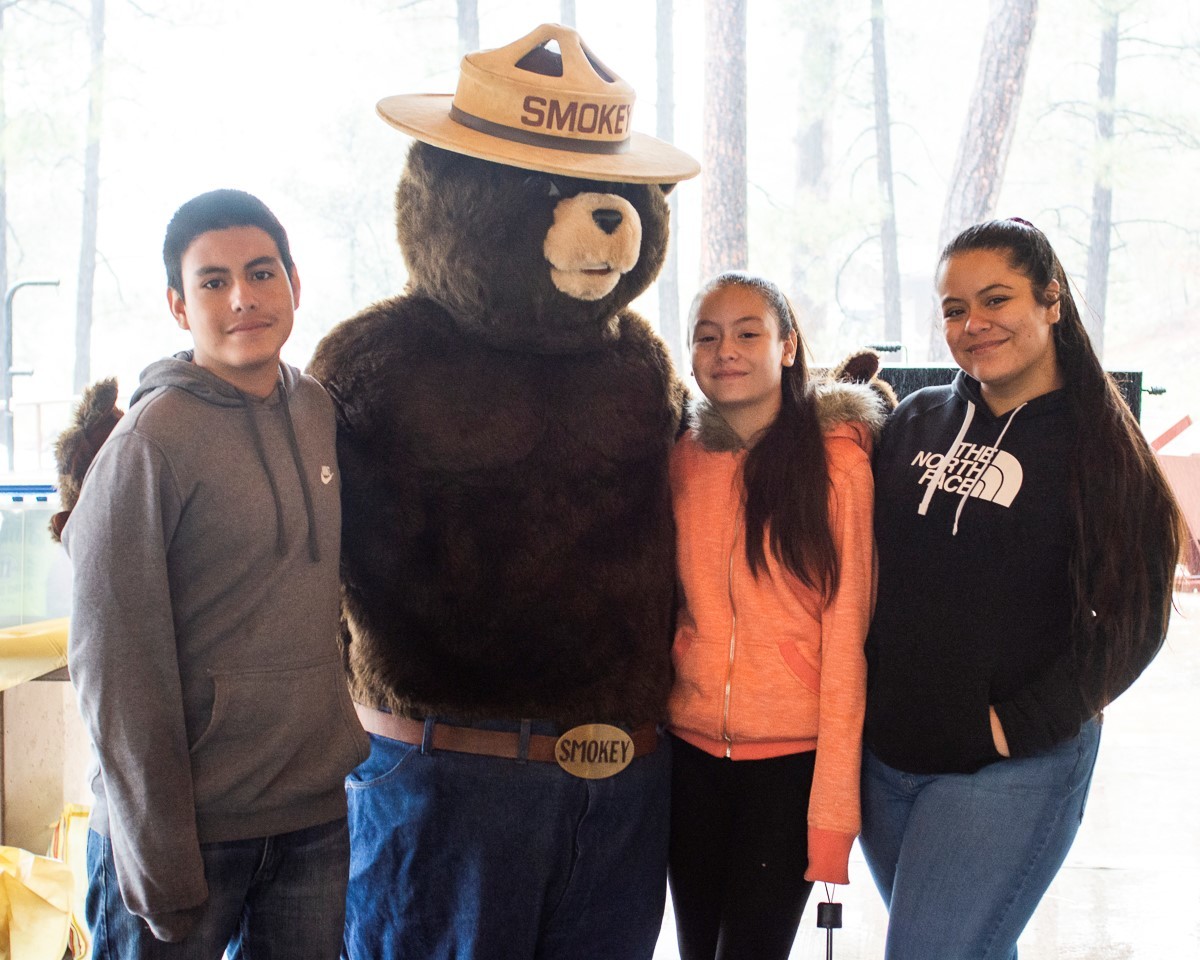
Photo by Michelle Dillon Photography
Click here to learn more about the Earth Conservation Internship.

